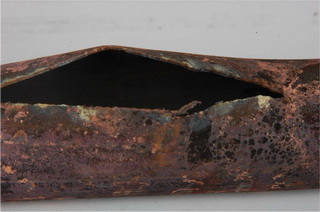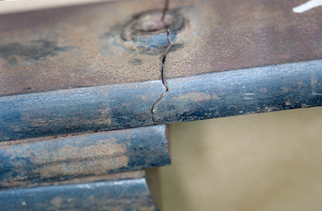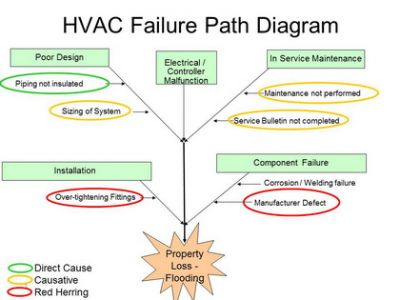
Understanding Why Materials Fail is Critical to Success in Litigation
On the Scene E-Newsletter, Edition 134, March 14, 2011
 Forensic engineering oftentimes involves an analysis of why a part or piece failed. Frequently, the answer can be uncovered by a Solid Mechanics/Material Science engineer. Take for example a pipe that fails and causes a building to flood and sustain associated damage. Allegations can include faulty pipe quality (product liability), poor maintenance of the piping system (owner/maintainer responsibilities), and careless/misuse actions by contractors working close to the pipe the day before the leak occurs.
Forensic engineering oftentimes involves an analysis of why a part or piece failed. Frequently, the answer can be uncovered by a Solid Mechanics/Material Science engineer. Take for example a pipe that fails and causes a building to flood and sustain associated damage. Allegations can include faulty pipe quality (product liability), poor maintenance of the piping system (owner/maintainer responsibilities), and careless/misuse actions by contractors working close to the pipe the day before the leak occurs.
Enter the Material and Solid Mechanics engineer. As Dr. Marc Zupan (CED Sr. Material Science Engineer) always says, “materials are a part of every case and material science expert testimony is fundamentally about the science of materials and their failure in real world applications”. In the case of a materials failure, your best witness is the material itself. It was there at the time of the failure and often possesses markings and other physical characteristics that when framed in light of application, loading conditions and environment will help explain the failure.
When conducting forensic engineering investigations, both destructive and non-destructive tools are used in evaluating the material. The Electron Microscope allows CED’s material science engineers to examine materials for such things as composition breakdown and surface cracks. Another test that is normally completed in association with an electron microscope is the Energy Dispersive Spectroscopy (EDS). The EDS works in conjunction with the electron microscope to determine the chemical species of materials. Other pieces of equipment that CED material science engineers readily use are the Optical Microscope and the industrial X-ray machine. The Optical Microscope allows engineers to create visual displays such as court room pictures and animation effects to show composition and magnification of the surface in question. The X-ray machine is utilized to examine materials for stress cracks or forgery such as a weak material covered by a stronger material. These measurement techniques combined with an understanding of system loading allows the engineer to link microscale material behavior to microscale response leading to the failure.
When the expertise of the material science engineer is coupled with these tools of the trade, a powerful asset is added to a forensic investigation attempting to ferret out the root cause of the failure and create some persuasive demonstrative evidence along the way. To find out more about how the Solid Mechanics and Material Sciences can help your case, visit our web site at www.cedtechnologies.com – call us at (800) 780-4221 – or via E-mail at casemanager@cedtechnologies.com.






